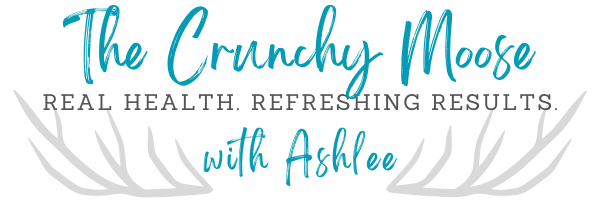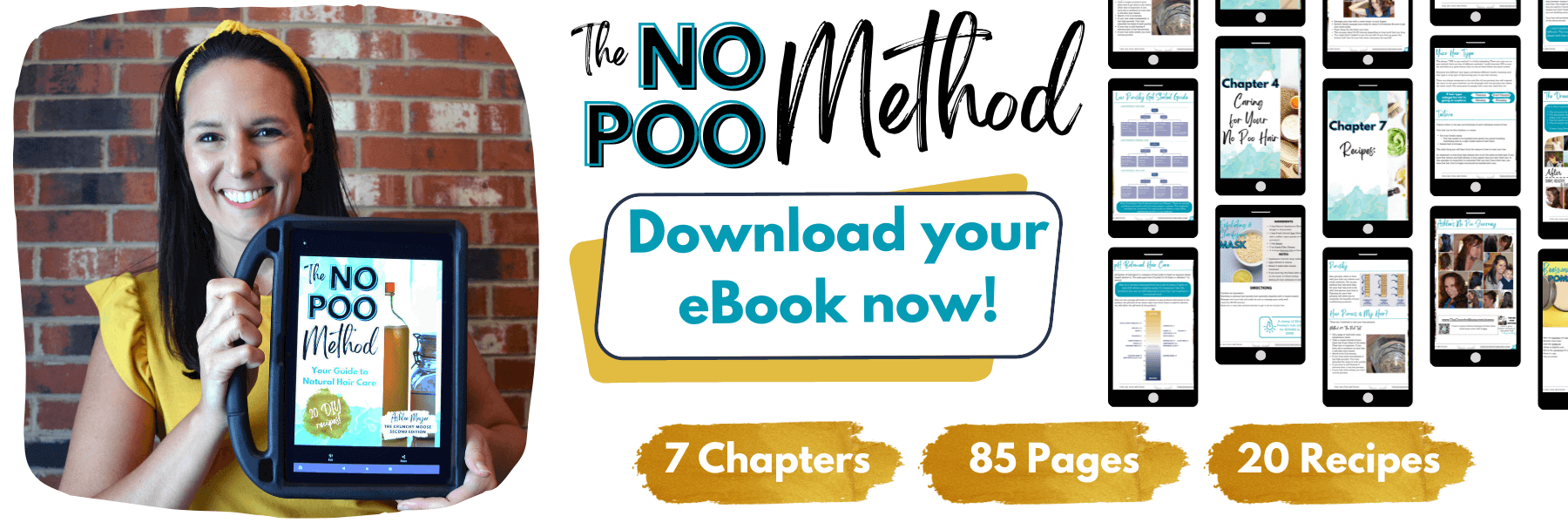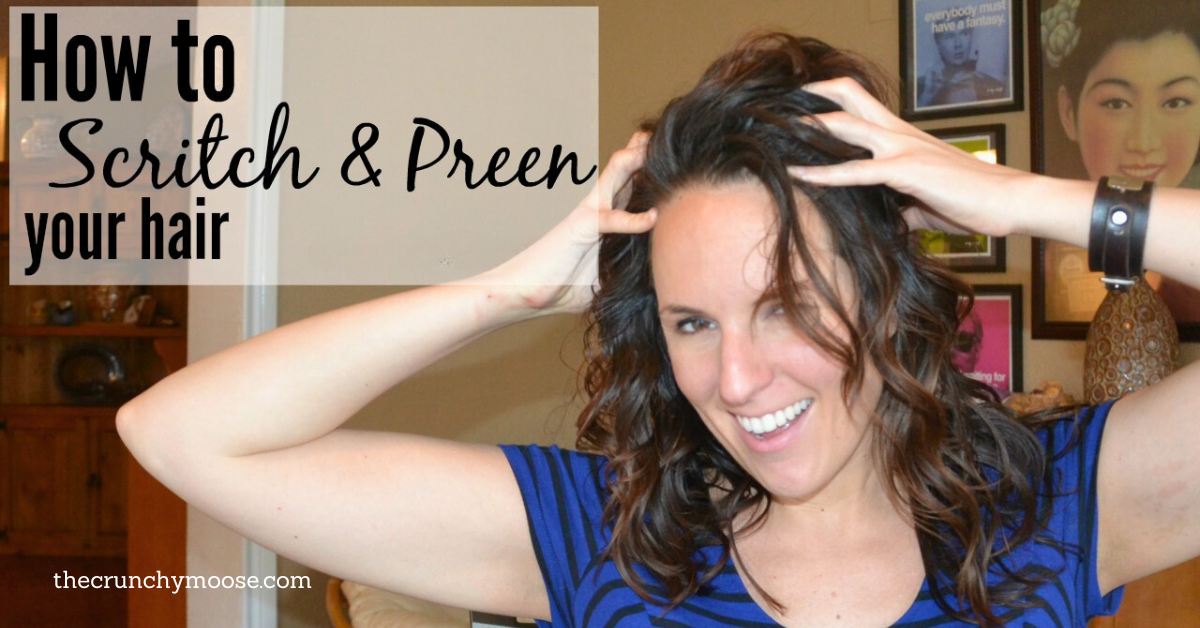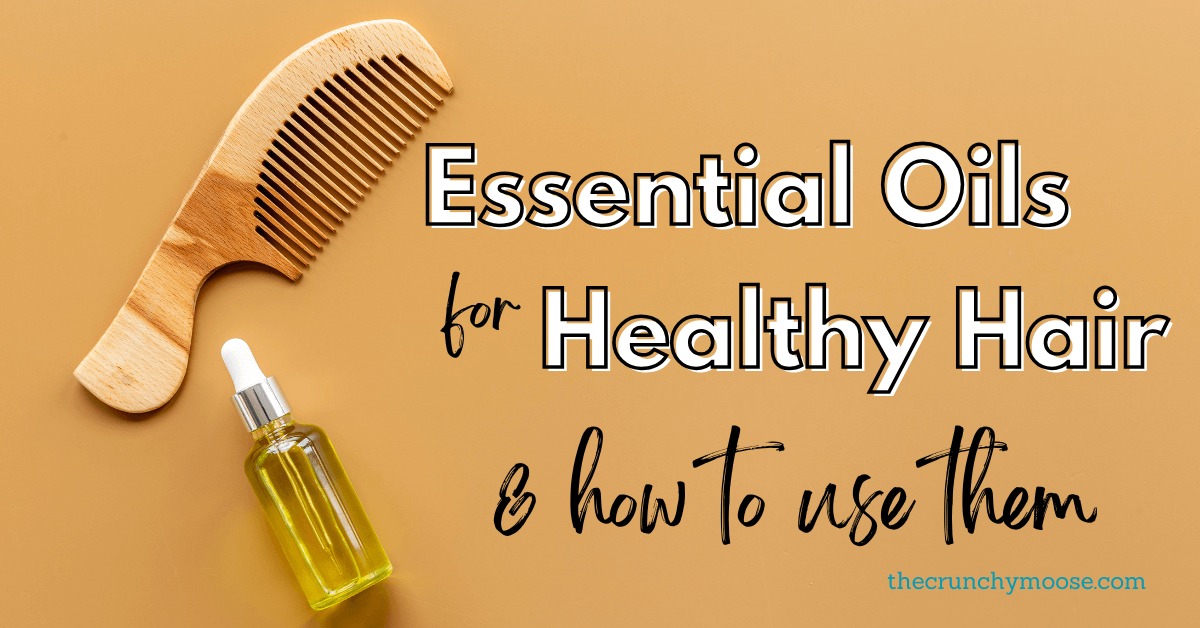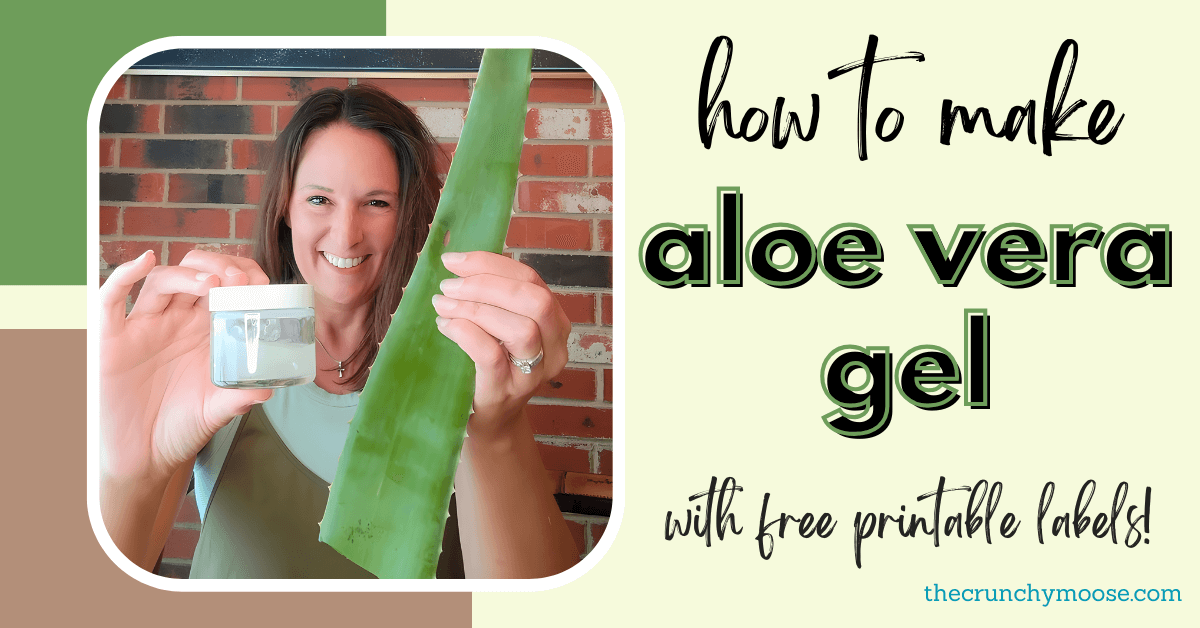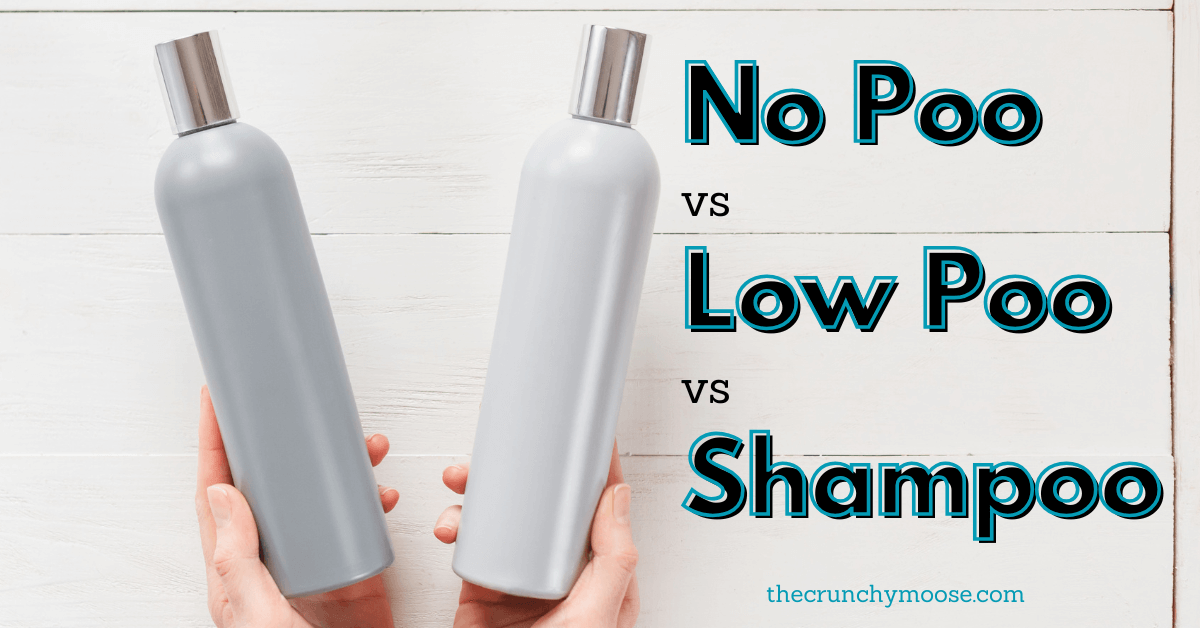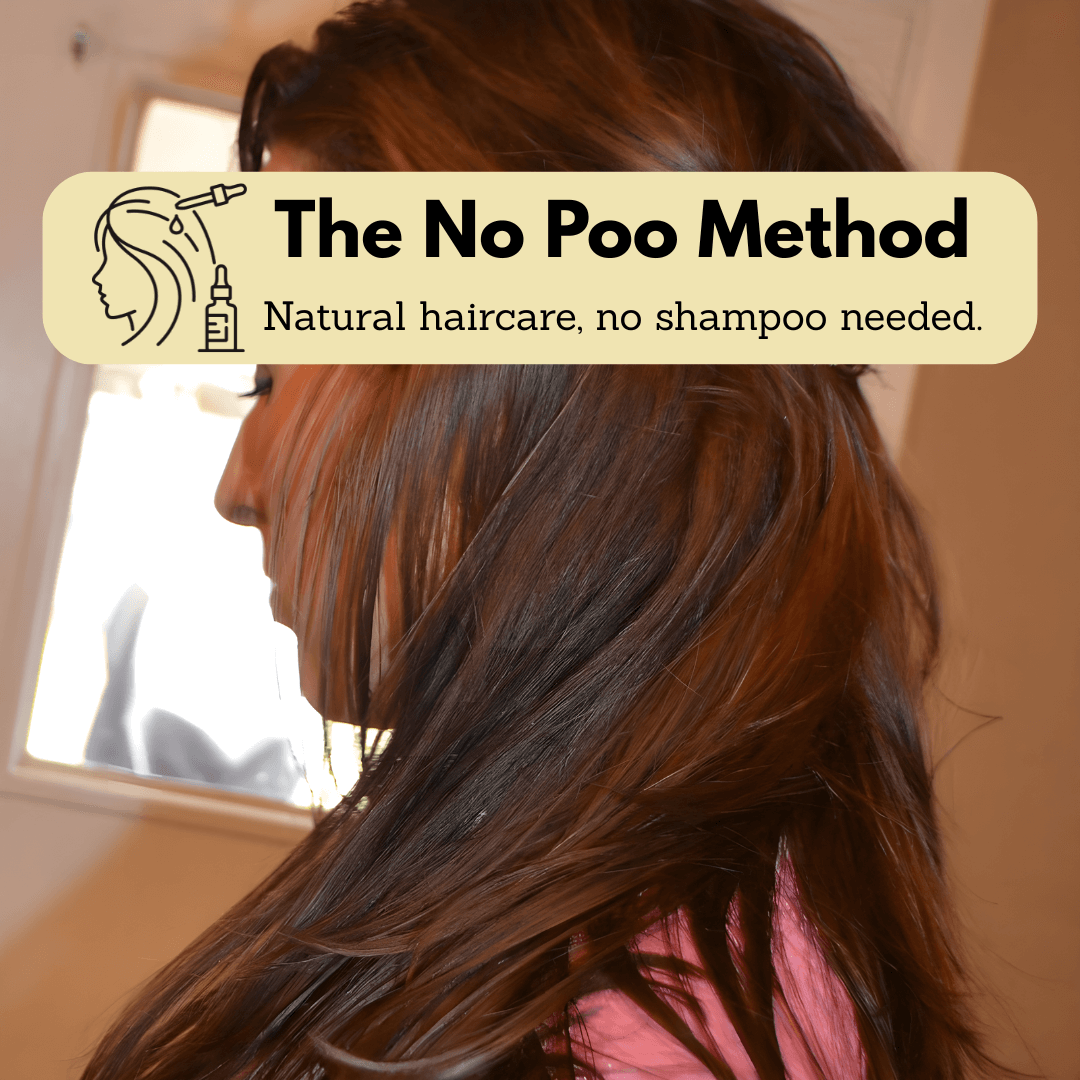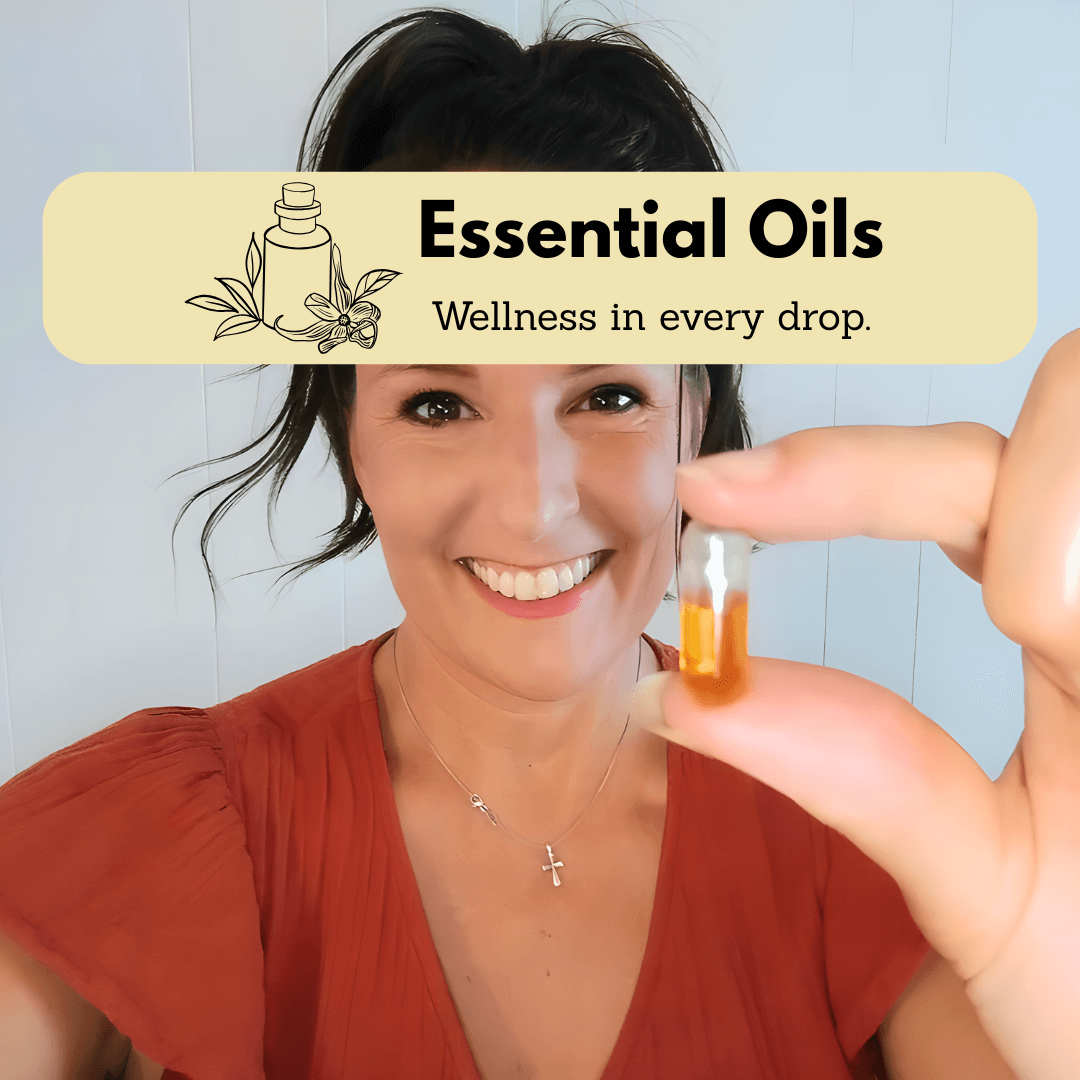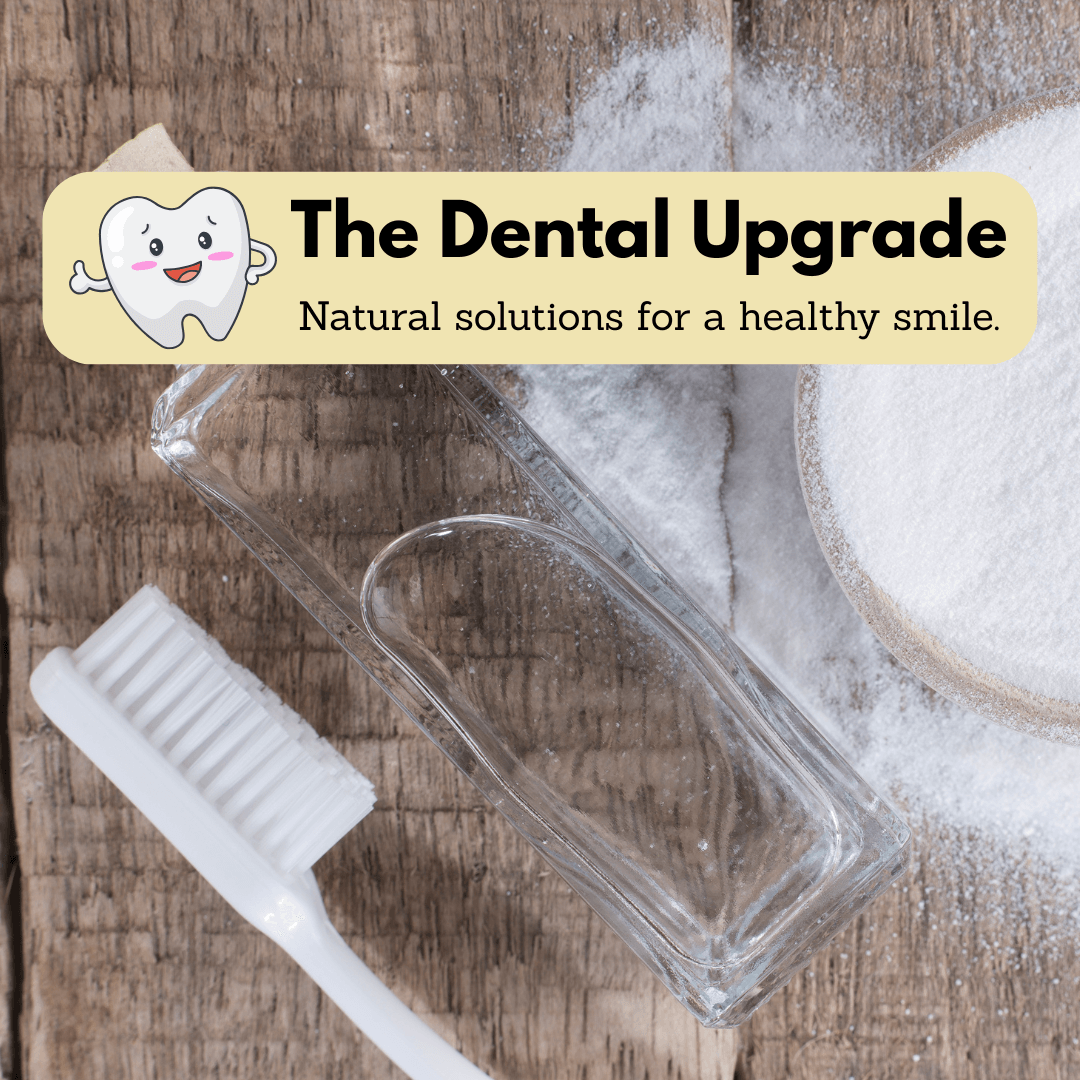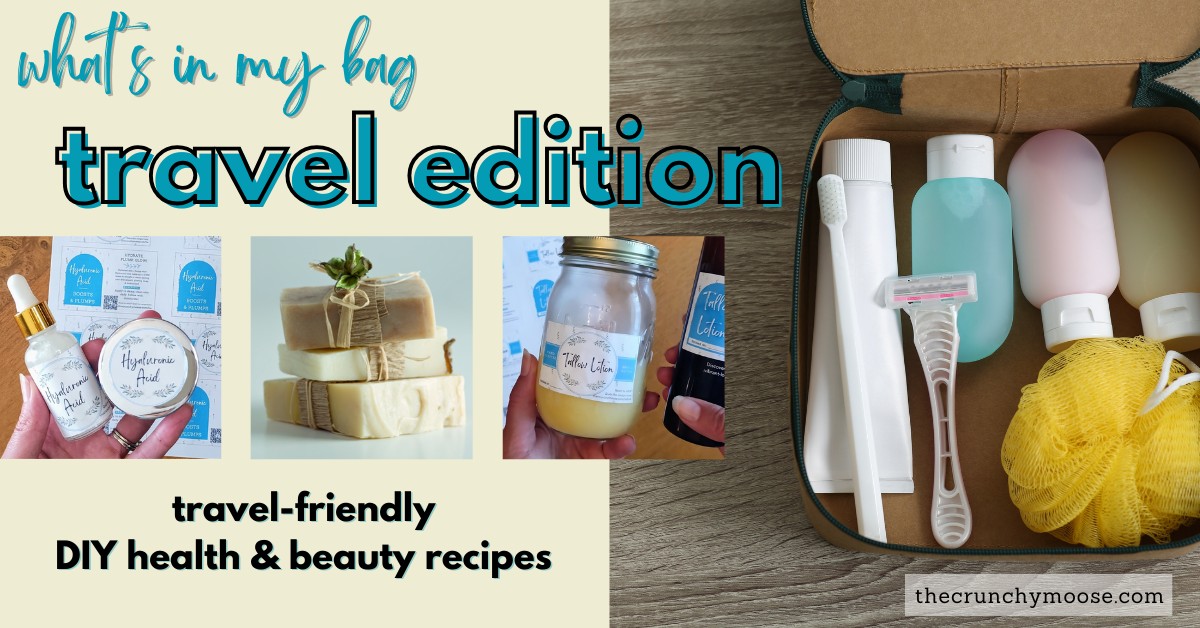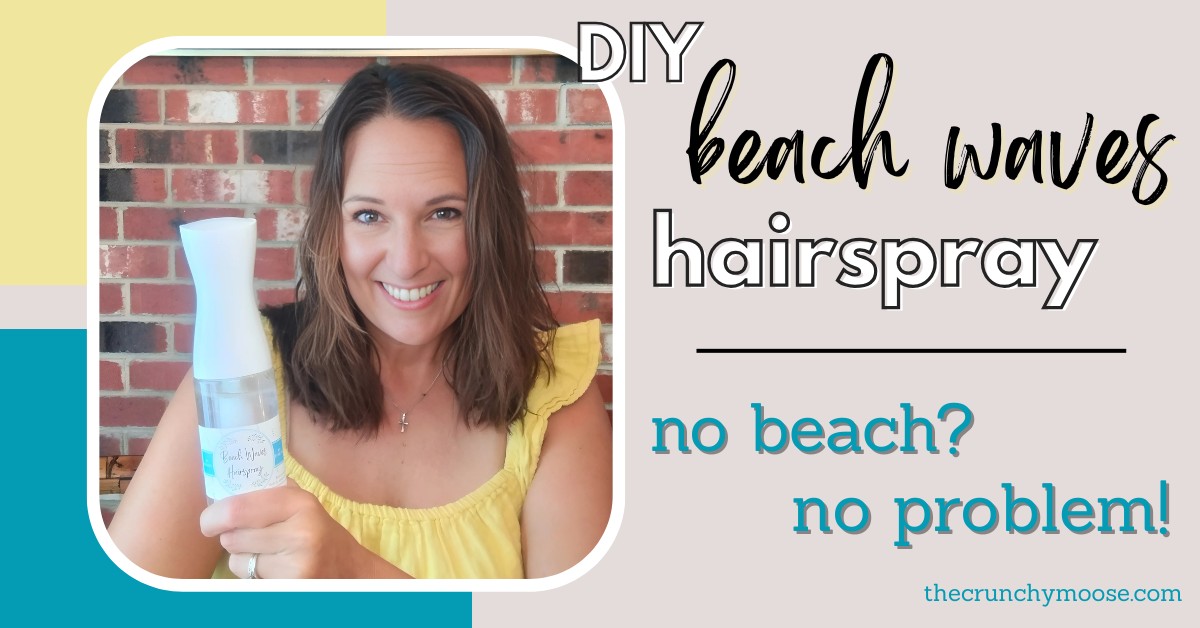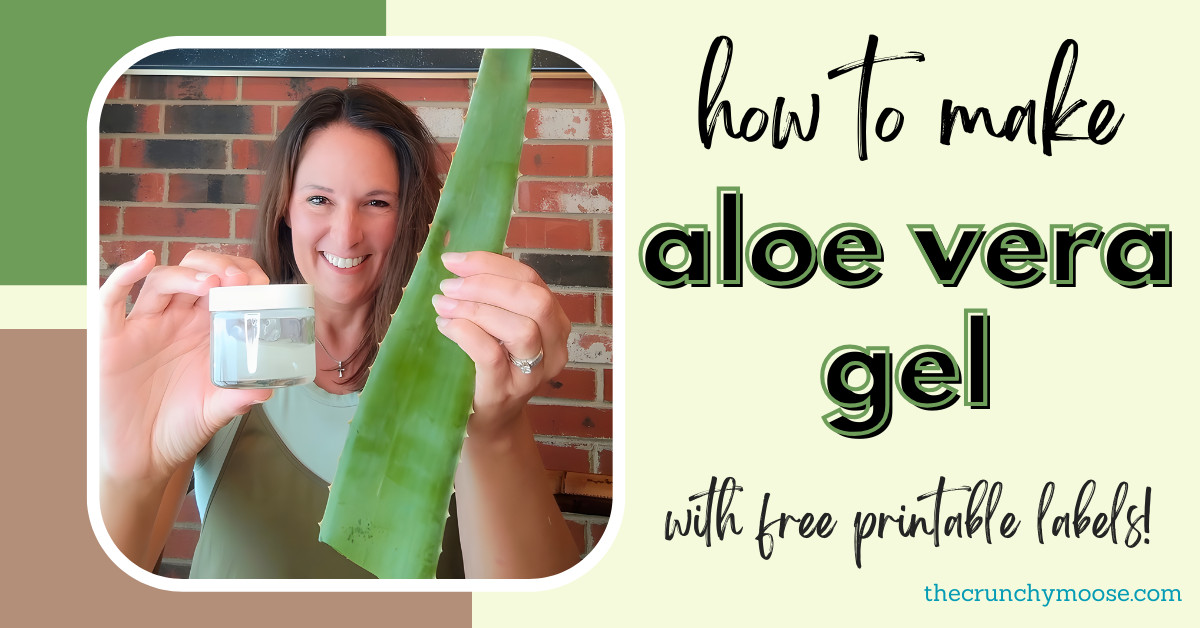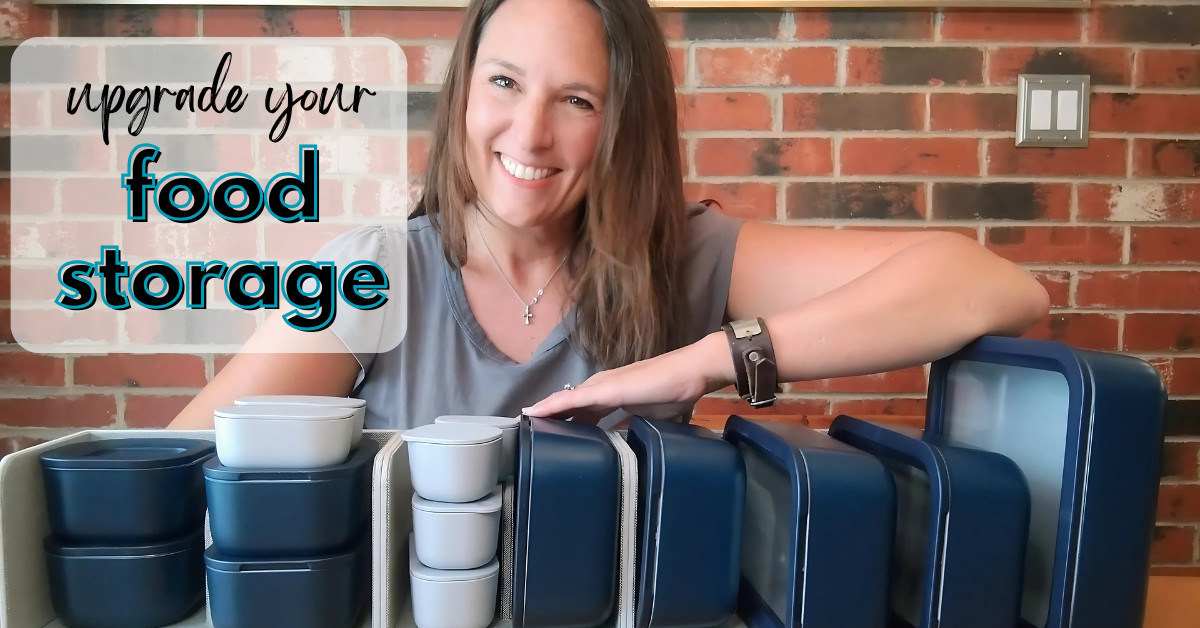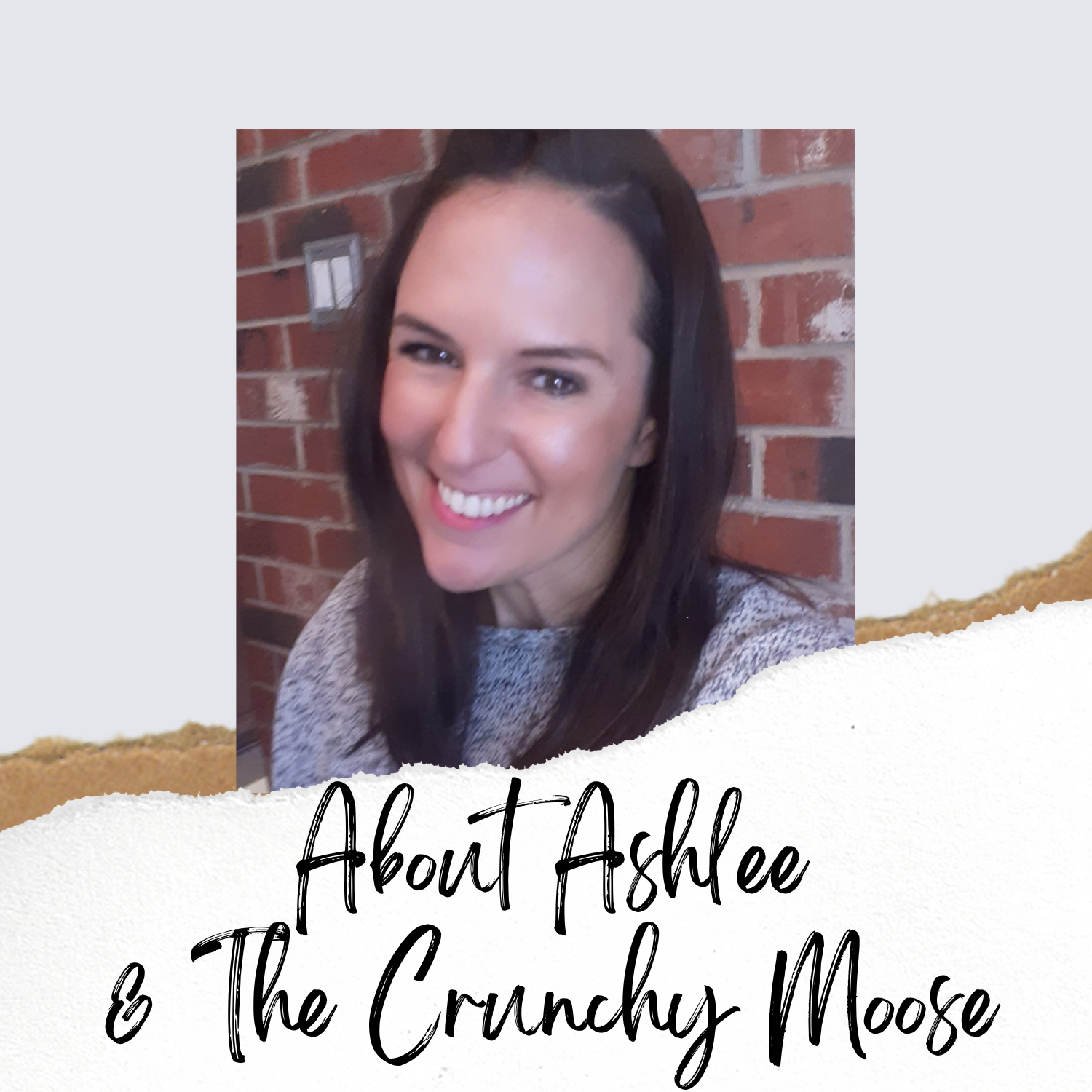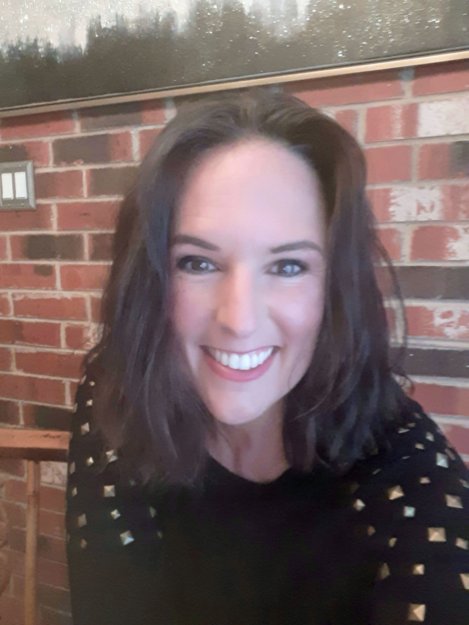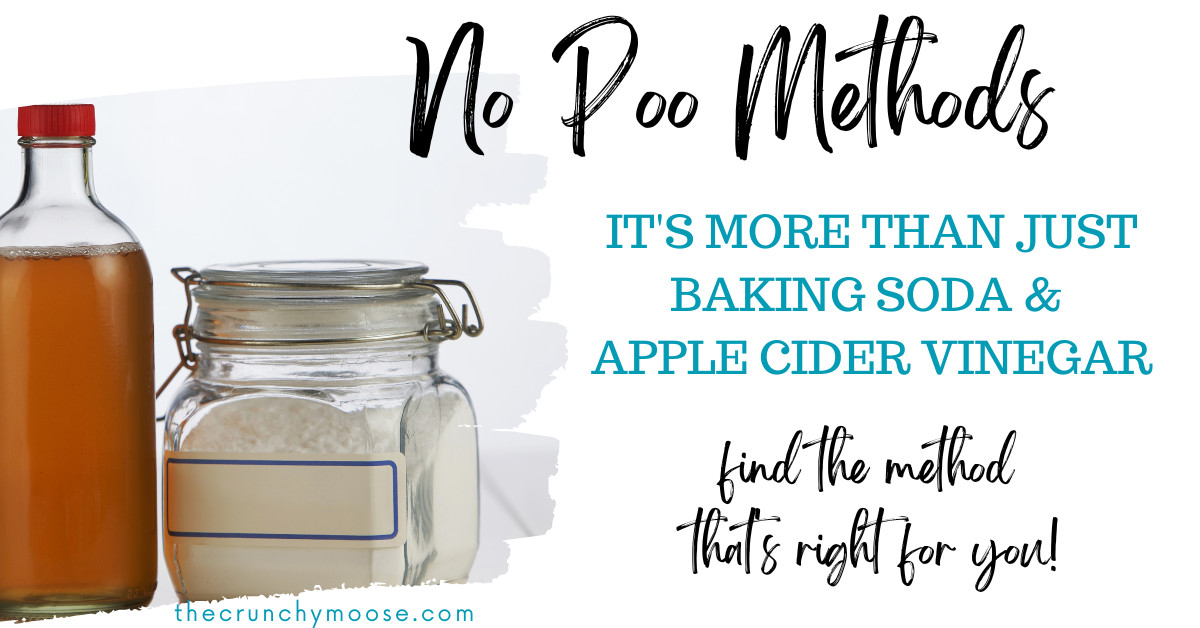
I could interview 100 no poo-ers and there is a good chance that not a single one of them follow the same routine. Everyone has different hair types and wants different results.
This list is some of the most popular options and is not an all inclusive list. There are lots of different natural products that wash, nourish, and condition hair.
Experiment & have fun!
Note: While I love hearing from you! It's extremely difficult for me to troubleshoot via email. If you need troubleshooting help, I highly recommend joining this facebook group with over 40,000 no poo-ers and ask there.
List of popular no poo methods (click the link to jump to that section):
- Baking soda and apple cider vinegar
- Protein Wash
- Boar bristle brush and scritch & preen
- Essential oils
- Water only
- Clay wash
- Soap nuts
- Dry shampoo
- Kefir & Kombucha
- Aloe vera and epsom salt
- Castile Soap
- Low Poo
Baking Soda and Apple Cider Vinegar
This is the most popular no poo method and combination. This is how I started no poo.
- Baking Soda (also known as bicarbonate of soda in some cultures): Use a good quality, natural baking soda. I use this one, read why here.
- Apple Cider Vinegar: A raw, unfiltered apple cider vinegar with the mother is best. I use this one, read why here.
How much of each ingredient to use will vary based on your hair type, needs, thickness, & length. Baking soda cleans your hair while apple cider vinegar conditions it. If your hair is dry, increase the amount of vinegar. If your hair is oily, increase the amount of baking soda.
Baking soda tips:
- Paste method::
- Keep your baking soda in a small container with a lid in your shower.
- When you wash your hair, get a small amount (will vary based on needs, about a teaspoon) in your palm.
- Mix with water to make a paste.
- Massage into your scalp for a few minutes.
- Rinse.
- Spray method::
- This method is more popular.
- Mix about one tablespoon of baking soda in about one cup of water. You can warm the water to dissolve the baking soda if needed. Store in a spray bottle. This amount will last one to three applications (depending on your hair).
- For either method:
- Be sure to focus the application of the baking soda to your scalp, not the shaft of your hair.
- Rinse completely.
- Follow the baking soda wash with an apple cider vinegar orother acid rinse to balance the pH levels.
- Too much baking soda will damage your hair. If your hair becomes dry or damaged from using this method, then you are using too much baking soda, too often. Baking soda shouldn't be used more than once a week.
- Baking soda should not be used with hard water.
- Baking soda should not be used to rinse chlorine.
- If your hair is damaged, don’t use baking soda.
Apple Cider Vinegar Tips
- Mix vinegar with water and store in a spray bottle. Adjust the ratio for your needs. About 2 tablespoons per cup of water works for most.
- Spray generously on your hair focusing on the ends. Let sit for a few minutes then rinse.
- The vinegar smell is gone before your hair dries. You can add essential oils to the vinegar to cover the smell if desired.
- Some people’s hair doesn’t respond well to apple cider vinegar. You can use a different acid rinse. It is very important to use an acid rinse after washing with baking soda to balance the pH levels
Ready to Get Started with The No Poo Method? Get Your Complete Starter Guide!
Since I have used the no poo method, my hair has been healthier, shinier, more manageable, and grows much faster. I'm wishing you all healthy, happy hair! I share all the secrets and exactly how I went 4 years without shampoo for the best hair ever in The No Poo Method ebook. Grab your book here.
Protein Washes
Some people’s hair loves protein and some people’s hair does not. Protein strengthens hair and gives it volume. Low porosity hair (like mine) generally responds well to protein (learn more about porosity here). Too much protein can result in dry, crunchy, tangled hair. If this happens to your hair, simply stop using all forms of protein until your hair is able to eliminate it and deep condition your hair (get diy deep conditioner recipes here). Most people do fine with no more than one to two a month. Rye flour and egg are types of protein washes
Rye Flour
Note: Rye flour is not gluten free.
This is one of my favorites! A rye flour wash leaves my hair very shiny and smooth. Rye flour has lots of vitamins, minerals, & nutrients and most hair types respond well to it. Plus, it's pH balanced perfectly for hair. Learn more about pH balanced hair care here. You can use any kind of rye flour (dark, light, etc) but the more finely it is ground, the better. I use this one.
- Mix 2-4 tablespoons of rye flour with 2-4 tablespoon water, stir until it is lump free
- I add about 3 drops of essential oils (optional, jump to the essential oils section)
- Massage into your hair and scalp (I wet my hair first)
- Leave for 5-15 minutes
- Rinse completely
It does feel a little slippery, waxy, and slimy as you apply it. But don’t worry, your hair will not be any of those things. If you are unable to rinse the flour out of your hair, try diluting it with more water or using a finer ground flour.
Rinsing your hair very well is important. Make sure your hair is tangle free before you wash. Tangles will trap the flour and make it hard to remove. Some people sift the flour before using to make. If you have thick or easily tangled hair, it may be more difficult for you to rinse it out. It can be done, just might take some more effort. The flour does have to come out by rinsing before it dries. I thought I would be able to brush it out after my hair dried. That is not the case at all.
Rye flour is pH balanced for hair and conditioning and acid isn't needed and is optional. Learn more about pH balanced hair care here.
Egg Wash
Yep, egg washes your hair. And it also conditions and strengthens it. Eggs have a lot of protein and that protein adds volume to your hair. The most important thing to remember when doing an egg wash is to use cool water from start to finish. Warm / hot water will cook the egg and you will have scrambled eggs in your hair that seems impossible to get out.
It is also important not to do egg washes too often. If your hair becomes stiff from an egg wash, that’s an indicator that your hair has overdosed on protein. Some hair types do not respond well to any additional protein.
- Beat an egg and apply to wet hair (be sure to use cool water; apply from the scalp to the ends of your hair). You can add about a tablespoon of water and/or honey to the egg if desired.
- Leave in for 5-15 minutes.
- Rinse completely with cool water.
A conditioning or acidic rinse afterwards is optional.
Boar Bristle Brush and Scritch & Preen
Boar bristle brushes (BBB) range from inexpensive to super expensive. BBBs can be 100% boar bristles or a mix of nylon and boar bristles. For fine hair, a pure bristle brush is better. For thick / coarse hair, a nylon mix is better. It’s best to use your BBB for preening only. Using it for detangling and on wet hair can damage your hair. The BBB is used to distribute your natural sebum oils.
How to scritch & preen:
- Detangle your hair with a comb or your fingers
- Scritch your hair. Scritch is massaging your scalp with your fingers. This takes 5-10 minutes. Massage your entire scalp with your fingertips. This encourages oil / sebum production.
- Preen your hair. Use your BBB to “pull” the oils down your hair. Section your hair into small sections and brush all the way from the roots to the ends. This distributes the oils down the length of your hair and moisturizes. This process takes 10-20 minutes depending on how much hair you have.
BBB and scritch & preen often to moisturize your hair & encourage hair growth. Some people do it only on days they wash their hair (either water only or with products) and some people do it daily. It’s important to wash your brush regularly to remove the oils. Castile soap or dish soap (I use this one) and hot water works.
Essential Oils
You can infuse essential oils to all of these methods. I do! When I wash my hair with rye flour, I add a couple drops of essential oils. When I make a hair serum, I add essential oils. When I mix my dry shampoo (get the recipe here), I add essential oils.
Essential oils promote a healthy scalp, add shine, nourish your hair, and add a wonderful, natural scent.
- Lavender (soothing)
- Cedarwood (healthy scalp and promotes hair growth)
- Peppermint (healthy scalp and promotes hair growth)
- Rosemary (healthy scalp and promotes hair growth)
- Clary Sage
- Sage
- Basil
- Juniper
- Ylang ylang
- Sandalwood (promotes hair growth)
- Lemon (photosensitive, if you have sun sensitive skin or plan on being in the sun, don't use lemon)
- Cypress
- Rose
- Melrose
- Purification (my favorite essential oil ever!)
- Tea Tree (healthy scalp)
Learn more about essential oils for hair here:
How to use essential oils with no poo:
- For a single use, I use about two to three drops of essential oils. For example, when I make my rye flour paste, I use two to four tablespoons of rye flour, mix with water to make a paste, and add about two to three drops of essential oils. You can do the same with clay, baking soda, egg, or any other wash you are using.
- For premixed recipes, I add 10–15 drops per cup of mix. So if you were to mix a liquid castile soap shampoo, mix your soap and water to desired ratio (anywhere from 1 teaspoon of soap per cup of water to a 50/50 mix), and add 10–15 drops of essential oils of choice. I do the same with my dry mixes like dry shampoo (get the recipe here).
- You can also do this with your vinegar rinse, especially if you don’t like the vinegar smell.
- For a hair serum, I mix a carrier oil with essential oils. My personal favorite is argan oil. I mix two oz. of argan oil with about 30 drops of essential oils. I use just two to four drops of this mix at a time on the ends of my hair to add shine and tame flyaways. Read about argan oil here.
- You can also use two to three drops of essential oils neat (not diluted or mixed with anything). Just put 2–3 drops on your palms, rub your hands together and run your hands through your hair. Or you can put a couple drops of essential oils on your brush and brush through your hair.
- You can mix your essential oils and use two to three at the same time or you can use just one oil at a time.
- As with just about everything no poo, the oils for hair types, issues, and dilution ratios aren’t one size fits all. Essential oils are synergistic; different people react differently to them.
Water Only
Although I will do a water only rinse in between washes occasionally, I have never gone full water only. But I have chatted with many ladies who love it. Most of them transitioned to no poo using the baking soda / apple cider vinegar method and then converted to water only.
Water only is exactly how it sounds. You rinse your hair with water only and don’t use any hair products. Most people who use the water only method scritch and preen with a boar bristle brush.
- Run warm water over your hair in the shower. Hot water can damage your hair.
- Scritch and preen your hair with your fingers while the water is running over your hair.
- Be gentle with your hair while it is wet. Don’t brush it, scrunch it, scrub it with your towel, etc. Pat it dry and lightly detangle with your fingers if needed.
- Let it air dry. Do not use a terry cloth towel to dry. Use fabrics made from natural materials like cotton or silk. An old cotton t-shirt is the most popular option.
You can wash with water as often as you like. Many water only people scritch & preen nightly and do a water wash weekly. Some only scritch & preen prior to washing. And some only wash twice a month. Like all of these methods, it all depends on personal preference and your hair.
Sweat is water soluble. You can use the water only method post workouts.
Note: Water only does not work well with hard water (see more in the FAQ page).
Clay Wash
There are several types of clay you can use to wash your hair:
- Bentonite clay is volcanic ash. When it is mixed with a liquid, it swells and forms a sponge. This sponge has a natural negative electric charge that attracts excess metals, hydrogen, toxins, and impurities, pulling them out of your hair & scalp. It replaces the toxins with naturally occurring minerals in the clay. I first tried using bentonite before I started no poo. I did not like the bentonite clay then at all. Bentonite is a powerful detox. So before I started no poo, the clay would detox my hair, leaving it feeling dirty and dry (which was a good thing for my hair in the long run, just difficult to manage during the detox phase). But now that my hair is fully detoxed, the clay leaves my hair very soft, clean, and manageable. Bentonite is best for oily hair. Because of it's detoxing power, if you are in the middle of transitioning, you can use bentonite clay to help speed up the detox process.
- Rhassoul clay is mined in Morocco. It contains a lot of minerals (including magnesium, iron, and potassium) and silica that are good for hair. It improves elasticity, moisturizes, exfoliates, and detoxes. Moroccan women have used it for beauty care for centuries with earliest known use during the 8th century. Rhassoul clay is best for dry and/or curly hair.
- Kaolin clay is the most gentle clay and good if you have a sensitive scalp. This is a good clay to use if you have not transitioned to no poo. As I mentioned, when I used bentonite clay before I transitioned to no poo, it was too strong of a detox. Kaolin clay stimulates circulation, gently exfoliates, and cleanses. Kaolin clay is best for dry and/or curly hair.
To use:
- Mix about 2 tablespoons (more or less depending on how much hair you have) clay with an equal amount of water, aloe vera, or apple cider vinegar.
- Massage into your hair, from scalp down the entire length of your hair.
- Let sit for 5-15 minutes. The more frequently you wash your hair, the less you will want this to sit.
- Rinse.
- It’s important to do an acidic rinse afterwards to balance pH levels. Apple cider vinegar is most popular.
You can use this mask as an occasional deep cleanser and detox. You can also use the same method on your face for a face mask (I love bentonite clay face masks).
Soap Nuts
Soap nuts are a berry that grow on a tree and they contain, of course, soap. This natural soap can be used to clean just about anything from laundry to glass to skin to hair. You can make an all purpose cleaning spray or a dish detergent with them It’s very soothing for your skin and great for skin issues such as periphrasis and eczema. And of course, use them to wash your hair.
First, make liquid soap:
- In a saucepan, boil about 6 cups of water with about 10 soap nuts.
- Reduce the heat and simmer for about 20 minutes.
- Let cool.
- Remove the soap nuts. Let them dry out. You can reuse them later.
- Store the liquid soap in the fridge. It will keep for a few weeks.
- You can add about 10-15 drops essential oils to the liquid soap (optional).
Use about 2-4 tablespoons of the liquid soap to wash your hair. Massage it into your hair just as you would shampoo. Let sit for 5-10 minutes. Rinse.
Dry Shampoo
Dry shampoo is your friend. However, it is important to note that dry shampoos do remove sebum, so overuse can damage and dry out your hair. It’s best to use your dry shampoo sparingly. Using it every day will counteract your transition efforts of balancing your sebum production prolonging the transition.
Dry shampoo soaks up the sebum oil, adds texture & volume to your hair, can help during the transition period, and can extend the time between washing your hair.
- DIY Dry Shampoo Options:
- BASE
- Arrowroot (find it here); My preferred base; Healthy for your scalp & hair and gluten free
- Talc Free Baby Powder (here)
- Non-GMO Cornstarch (find it here)
- Baking Soda (use a natural brand - find out what makes a good quality baking soda here and find it here); Can be drying so not recommended if you use dry shampoo often
- Ground Oatmeal Powder (very finely grind rolled oats in a spice/coffee grinder or blender; find it here); Great for soothing a dry or itchy scalp. Mix with arrowroot or corn starch.
- Clay: Red Moroccan, Bentonite, or Kaolin; Use for extra greasy hair at a ratio of about 1 part clay to 4 parts other base (arrowroot or cornstarch)
- TINT (notes about tinting below)
- OPTIONAL
- Essential Oils (find the oils I use here)
- BASE
This is an easy, create your own adventure type of recipe! No measuring spoons or cups required! Grab a cute jar or shaker. Pick your base from the list above, add some tint if needed, and add some essential oils if your using them. Mix it up and you're done!
I have dark hair. My favorite combo:
- About 3 parts arrowroot
- About 1 part cocoa powder
- About 20 drops of essential oils per about 1/4 cup of dry ingredients
Kefir and Kombucha
Kefir and kombucha are fermented and full of probiotics great for a healthy scalp. They are both easy to make. They are both acidic and can be used instead of apple cider vinegar. You can use kefir & kombucha as a hair mask, deep conditioner, conditioning rinse, or to wash your hair.
- Kefir is similar to yogurt. Learn how to make kefir here.
- Kombucha is a fermented tea. Learn how to make kombucha here.
- Read about probiotics here.
To use:
- Use about 1/4 cup of kefir or kombucha.
- Massage into your hair and scalp.
- Leave for about 20 minutes.
- Rinse well.
Aloe Vera & Epsom Salt
Epsom salt adds volume to hair. Aloe vera is moisturizing. I like to use this wash when my hair feels a little dry and/or flat.
- Mix about 1 teaspoon epsom salt with 2-4 tablespoons aloe vera gel.
- Add a little water to get the desired consistency (optional).
- Massage into scalp and hair.
- Rinse.
This rinse does cleanse my hair and leave it very soft & bouncy. But I have heard that for some, it moisturizes great, but does not clean very well. So if it doesn’t cleanse your hair, you can wash with another method and follow with this as a rinse.
Learn how to make fresh aloe vera gel here.
Castile Soap
Technically, castile soap and products with castile soap (like shampoo bars) are low poo. But I am giving it it's own section because it is widely used and a great option for many people.
- There are many different flavors of castile soap. You can also use castile soap for your face and body wash.
- It is too harsh to use straight on your hair. How much you dilute is up to you. I’ve heard a 50/50 ratio of soap and water all the way up to 1/2 teaspoon soap per 1/2 cup water. Mix and use like regular shampoo.
- An apple cider vinegar or conditioning rinse is recommended afterwards.
- Castile soap does not work well with hard water (see more in the FAQ page).
Low Poo
Low poo is not technically no poo. It's a great option for people that want a more natural hair routine but have trouble making it through the transition phase.
Another option is to transition to low poo and then to no poo. The transition from low poo to no poo is easier since your hair doesn't have as much to detox.
Low poo is defined as using a shampoo without sulfates, silicones, or parabens. I also avoid products with fragrance. My favorite low poo shampoo and conditioners are these.
Pin this article to save it for later!
Also check out:
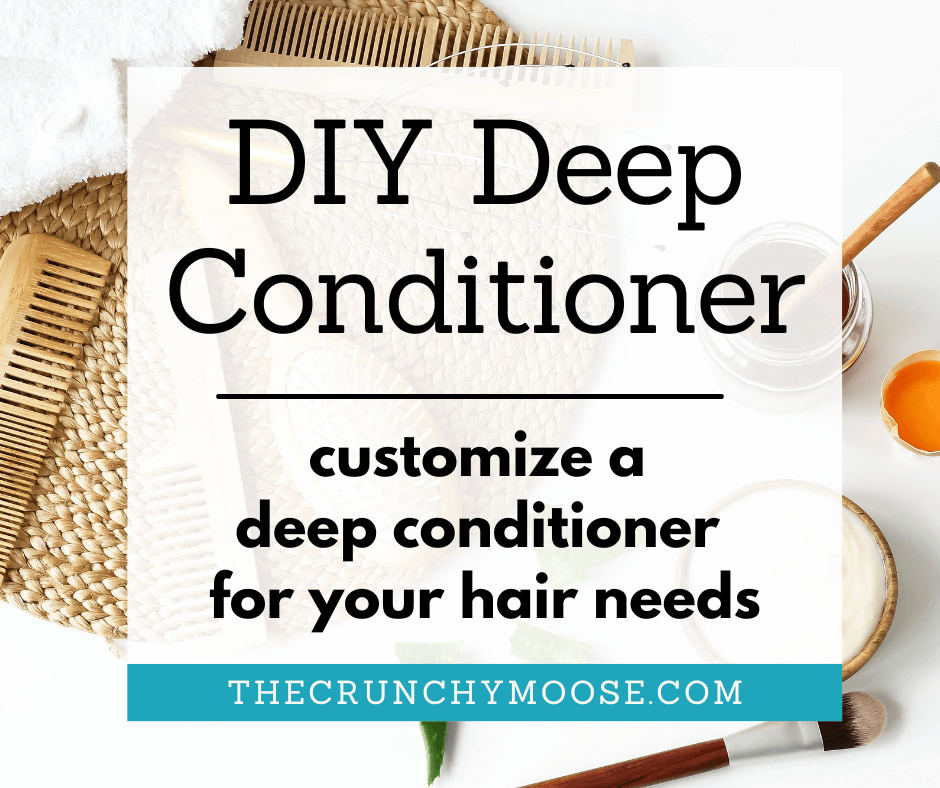 | 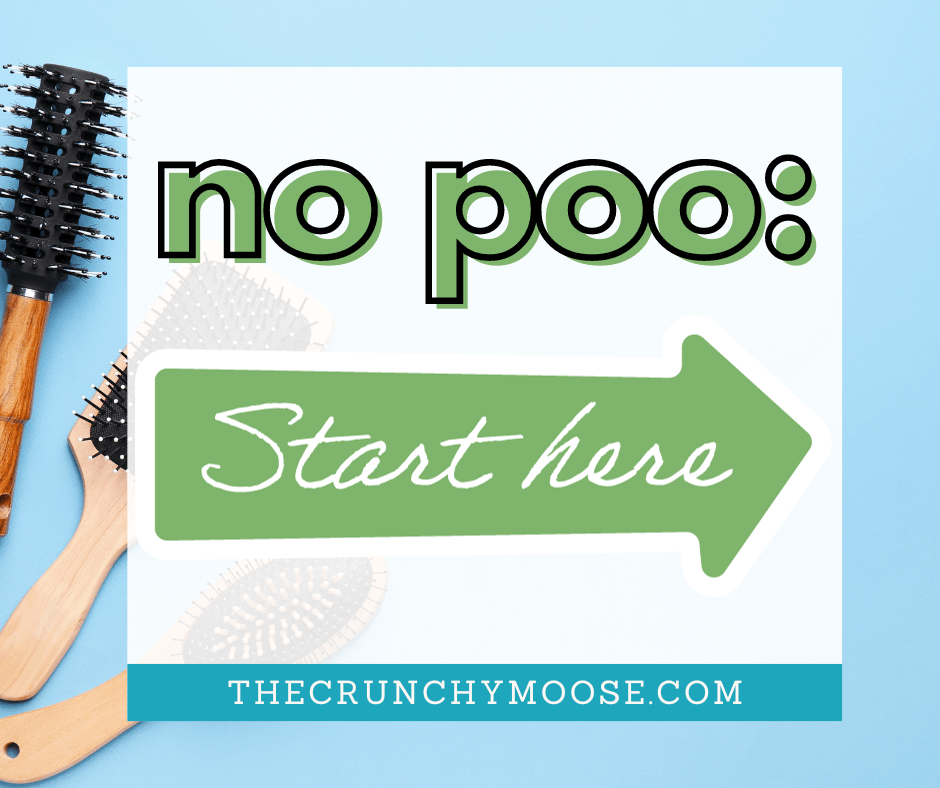 | 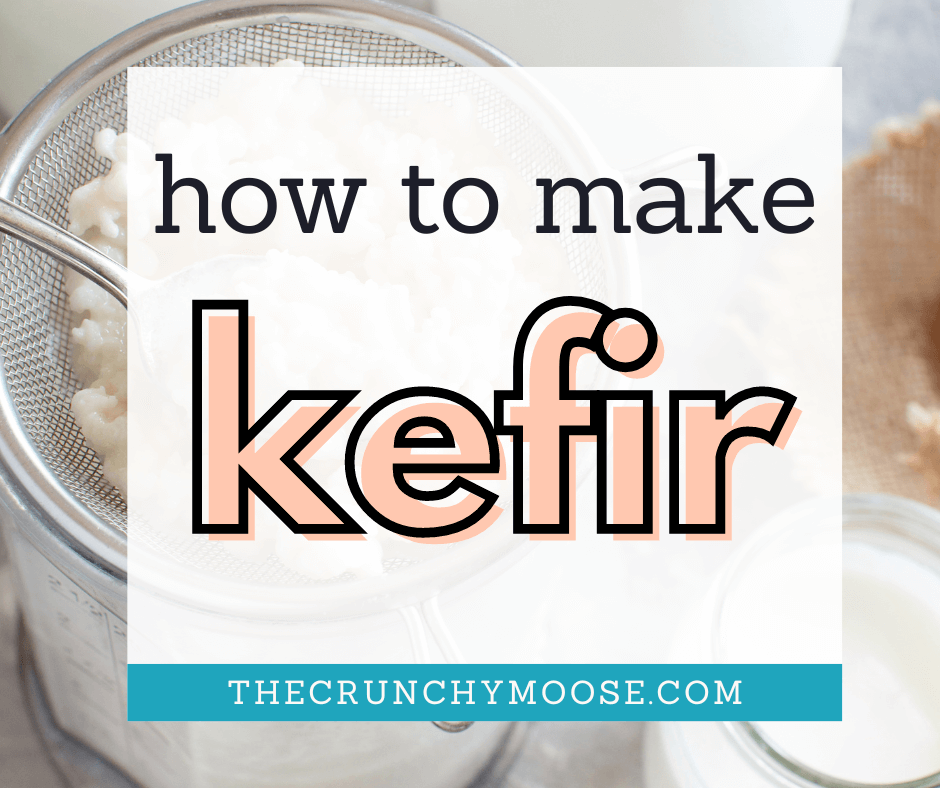 |
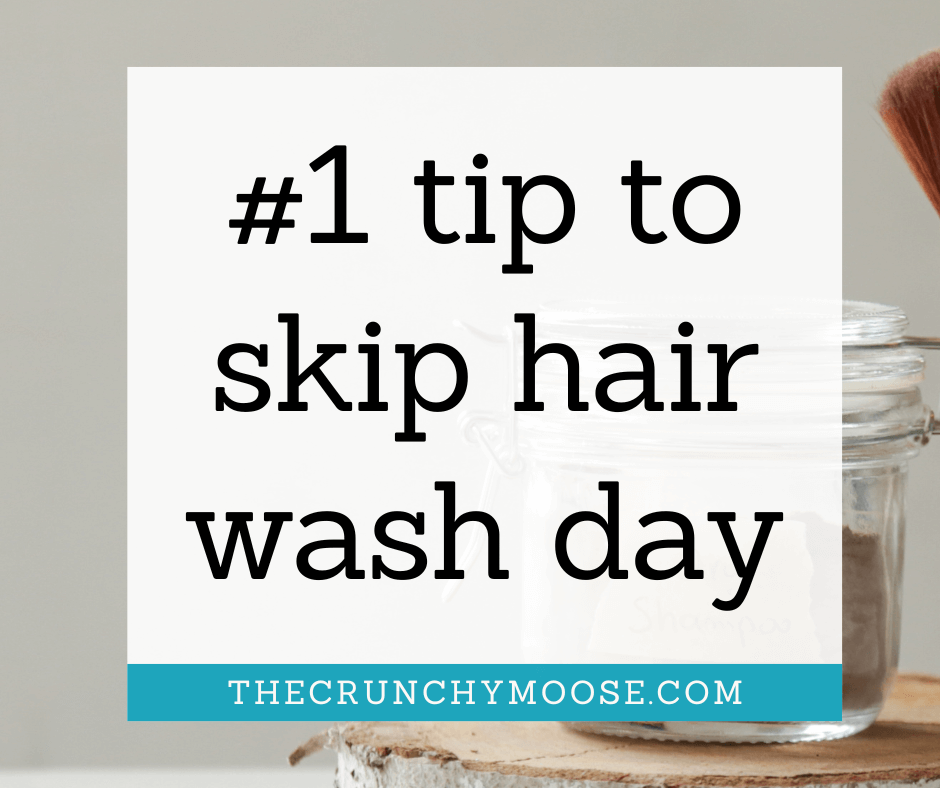 | 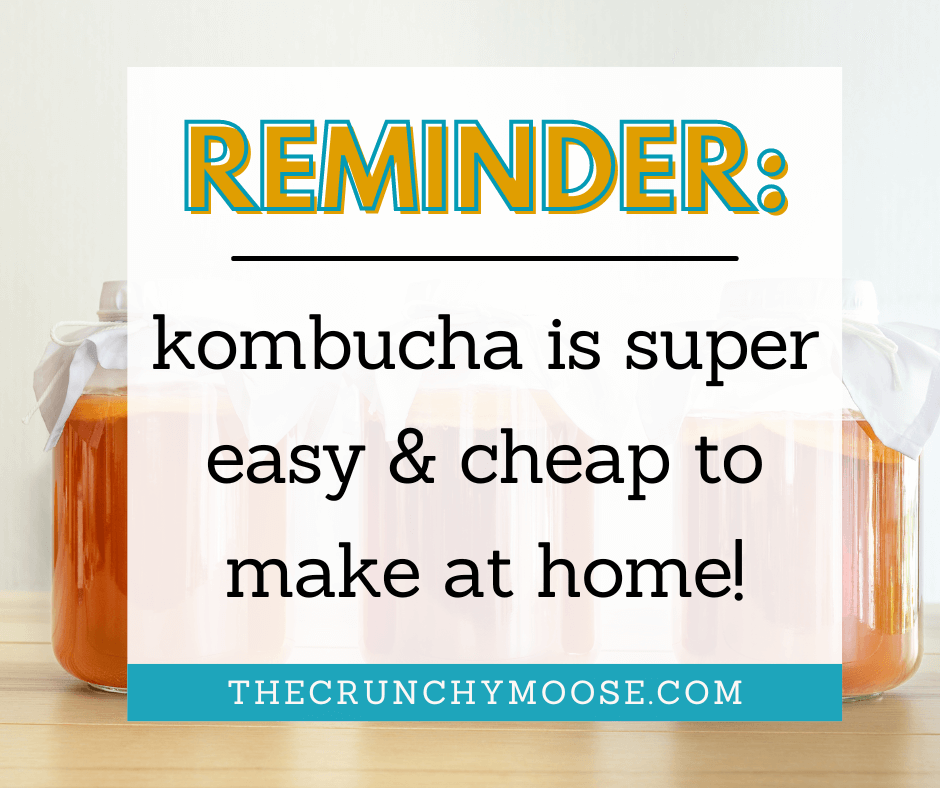 | 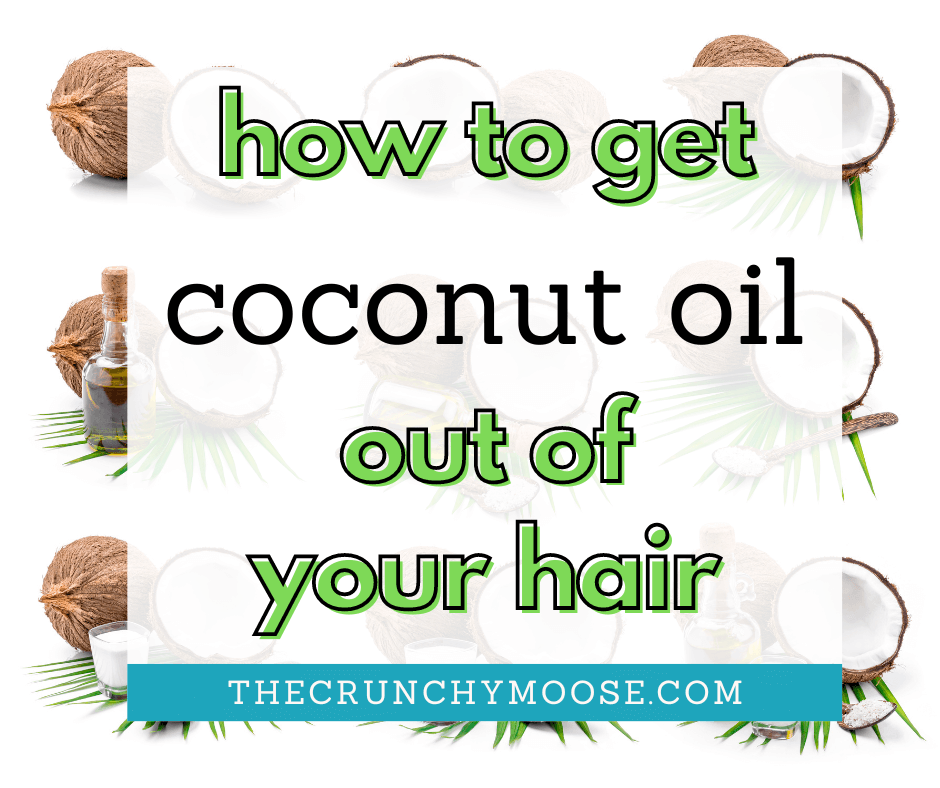 |
